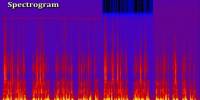Silicon Carbide
Definition
Silicon carbide (SiC) is an extremely hard bluish-black insoluble crystalline substance produced by heating carbon with sand at a high temperature and used as an abrasive and refractory material. The only compound of silicon and carbon is silicon carbide (SiC), or carborundum. SiC does occur naturally as the mineral moissanite, but this is extremely rare. However, it has been mass produced in powder form for use as an abrasive since 1893. As an abrasive, it has been used for over one hundred years in grinding wheels and many other abrasive applications.
![]()
Since the late 19th century silicon carbide has been an important material for sandpapers, grinding wheels, and cutting tools. More recently, it has found application in refractory linings and heating elements for industrial furnaces, in wear-resistant parts for pumps and rocket engines, and in semiconducting substrates for light-emitting diodes.
Silicon carbide is an excellent abrasive and has been produced and made into grinding wheels and other abrasive products for over one hundred years. It is used in abrasives, refractories, ceramics, and numerous high-performance applications. The material can also be made an electrical conductor and has applications in resistance heating, flame igniters and electronic components.
Production and Properties of Silicon Carbide
Silicon carbide was discovered by the American inventor Edward G. Acheson in 1891. While attempting to produce artificial diamonds, Acheson heated a mixture of clay and powdered coke in an iron bowl, with the bowl and an ordinary carbon arc-light serving as the electrodes. He found bright green crystals attached to the carbon electrode and thought that he had prepared some new compound of carbon and alumina from the clay.
![]()
Silicon carbide is composed of tetrahedra of carbon and silicon atoms with strong bonds in the crystal lattice. This produces a very hard and strong material. Silicon carbide is not attacked by any acids or alkalis or molten salts up to 800°C. In air, SiC forms a protective silicon oxide coating at 1200°C and is able to be used up to 1600°C. Chemical purity, resistance to chemical attack at temperature, and strength retention at high temperatures has made this material very popular as wafer tray supports and paddles in semiconductor furnaces. The electrical conduction of the material has lead to its use in resistance heating elements for electric furnaces, and as a key component in thermistors (temperature variable resistors) and in varistors (voltage variable resistors).
Pure SiC is obtained as colorless crystals, with a density of 3.21 g/mL and an extremely high melting point of 2,730 °C. It is more commonly found as a bluish-black, iridescent crystalline solid, due to small amounts of iron or other impurities from the industrial production.
It is a very stable and chemically inert compound. It is an extremely hard material, with a Mohs hardness rating of 9, close to that of diamond. It is also characterized by its high thermal conductivity, high-temperature strength, low thermal expansion, resistance to chemical reaction, and ability to function as a semiconductor.
![]()
Applications of Silicon Carbide
Silicon carbide is a popular abrasive in modern lapidary due to the durability and low cost of the material. In manufacturing, it is used for its hardness in abrasive machining processes such as grinding, honing, water-jet cutting and sandblasting. Particles of silicon carbide are laminated to paper to create sandpapers and the grip tape on skateboards.
It is used to make various materials such as sandpapers, grinding wheels, cutting tools, hard ceramics, automobile parts, refractory linings, high temperature bricks, heating elements, wear-resistant parts for pumps and rocket engines, and even jewelry. It is also an important material in the electronics industry and used for making light-emitting diodes (LEDs) and semiconductor devices.
Reference:















